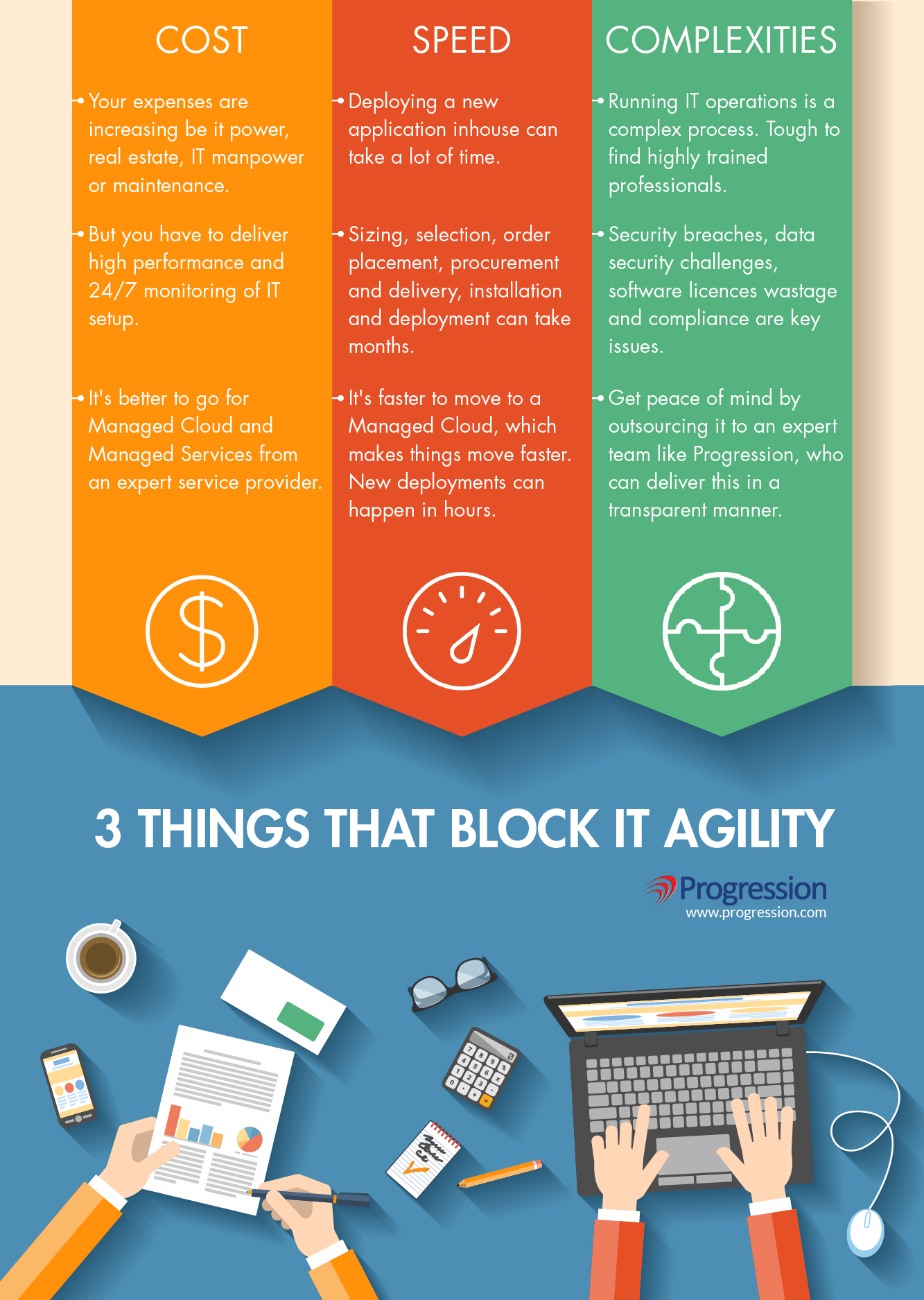As the head of a good IT team you have your work cut out:
- Run the IT operations smoothly and in a highly available manner
- Focus on new initiatives that will help the company achieve its business goals in the short term as well as the long term.
Easy to say. More often than not, all the time, energy and efforts go into trying to achieve the first goal. And the second one doesn’t get the attention and care it deserves.
So what’s stopping you and your IT team from achieving its goals, its true potential? What comes in the way of IT agility? We think these are the obstacles in front of you.

1. Speed: Things take way too much time. Consider this. Deploying a new application and running it smoothly can take several months of work. By the time you have got it in a stable mode, it’s time for AMCs and upgrades. Or how about getting the hardware up and running for a new project? The entire process from sizing and selection, placing the order, procurement and delivery, installation and deployment can take months. By which time, the business has lost some of the revenue opportunity it had hoped to leverage with the new project.
There is no time, and little patience in the board room, when it comes to IT projects. It’s time to move fast, and get results going.
How do you make it happen? Move to a Managed Cloud, of course. Once you have migrated your key application(s) to the cloud, things will move faster. Commissioning and decommissioning take a matter of minutes. New deployments can happen in hours, if not days.
2. Costs: Expenses are increasing. Take any aspect, and you’ll see a hike in expenses. Power, real estate, good IT people, running and maintaining IT inhouse…take your pick. On the other hand, you are also accountable for delivering high performance and 24/7 monitoring of your IT setup, especially if the company has a global footprint. But few people truly appreciate how much that really costs.
For example, if an enterprise wants to have 24/7 IT monitoring, how many people do you think it needs to hire? 2 or 3, one would guess. No! An enterprise would need to hire over 5 people to make that happen! Considering an average salary of Rs 30,000 per month per person, this cost works out to an astounding Rs 18,00,00,000 per year! The CFO is very likely to throw a fit!
Or consider the weight your server room can handle. Did you know a typical server room can reach a weight of 1400 kg/sq m? It’s highly likely that your server room can only handle a maximum of 300 kg/sq m. So you need to build a new space to handle that weight, assuming your company does have that extra space. And the bills mount.
Or consider this: for every 1kW of heat generated in your server room, you will need 1kW of air conditioning? Are you prepared for this? And when there is a power outage, how do you ensure availability? More bills!
Inhouse IT for mid-size enterprises is making less and less business sense. Especially if you have the option to go with matured Managed Cloud and Managed Services from expert service providers like Progression.
3. Complexities: Running the IT Operations is increasingly complex. People you have trained leave for a better job offer. Is there anyone who is truly on top of the various upgrades, updates and patches that the various software need? Are you fully confident that there are no security breaches? That all confidential data is fully secured? That there are no wasted software licenses? That you are fully compliant?
IT Operations is no more the job of a few generalists and a couple of specialists. You need a team of specialists for every aspect, who also have access to best-of-breed solutions and tools as well as industry best practices. And who have the ‘whatever IT takes’ approach.
It’s time for IT Heads to give their IT Operations a hard review and take the decision to outsource it to an expert team that can deliver in a transparent manner. It will leave them with the time to do their real job well—that of ensuring that the IT roadmap can consistently help deliver the business goals.


